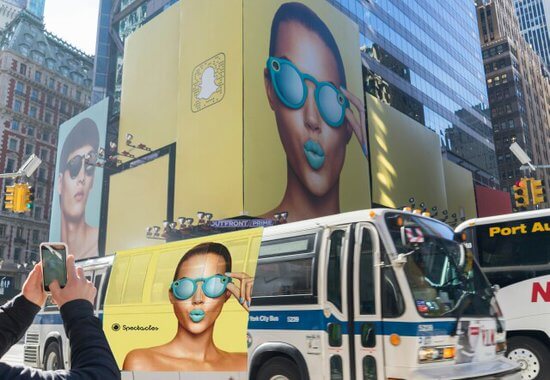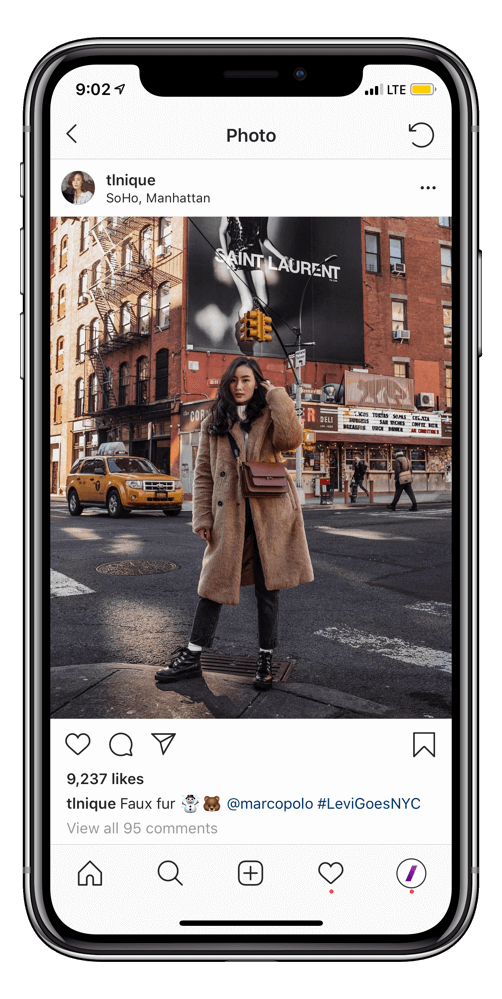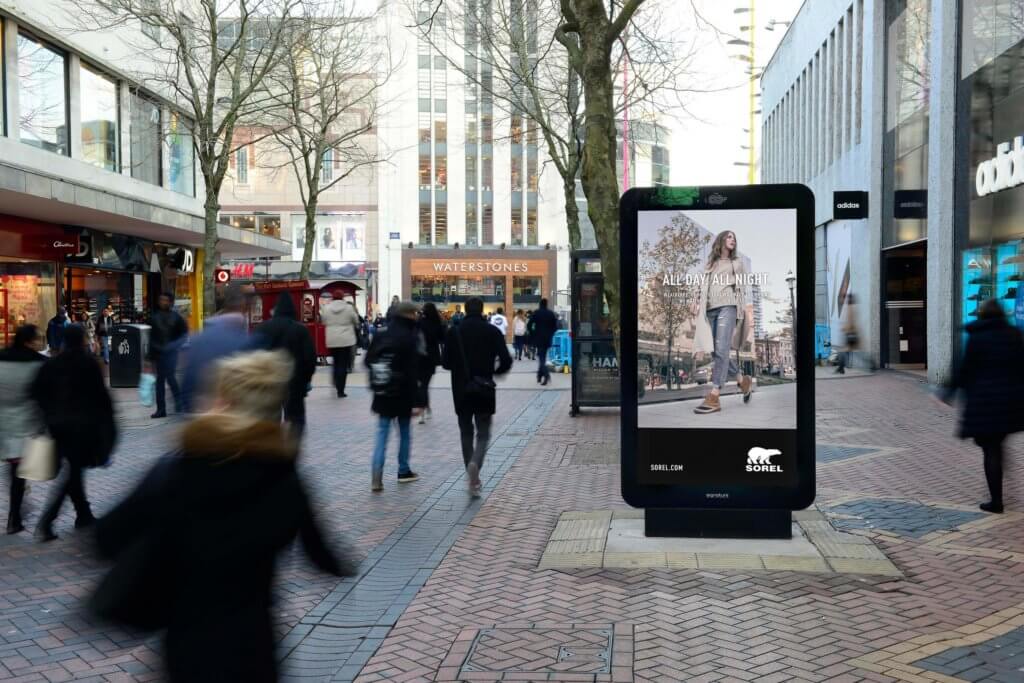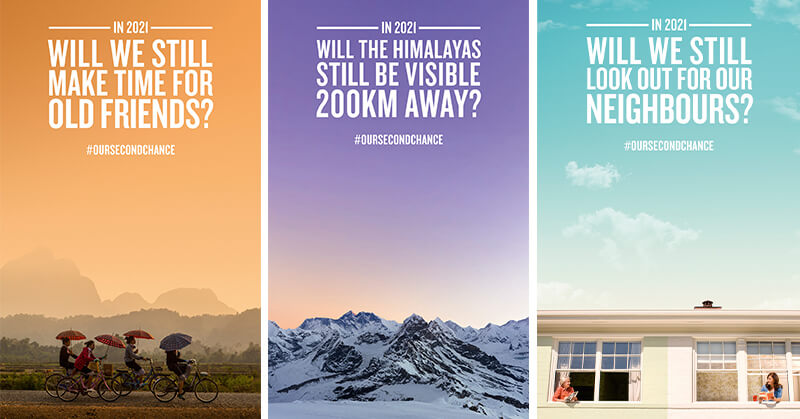
What is Out-of-Home (OOH) Advertising?
OOH is a form of advertising that’s located anywhere outside of a consumer’s home. It can be a mix of billboards, bus shelters, transit, mobile, place-based, and digital displays. Although it is considered a traditional medium, it remains ideal for bringing value to advertisers and helping brands reconnect with consumers. This is especially true at a time when consumers attention is focused on clicks, shares, and instant gratification. One in three consumers now say they dislike online ads and more than half are using ad blockers. Don’t get me wrong, brands need a digital presence in the digitized world we live in, but is advertising online sufficient enough to stand on its own? While it may deliver short-term results, brands need to focus on the importance of brand building in order to deliver long-term value and that’s where OOH thrives the most. Many advertisers are now combining OOH and digital advertising in their media mix to get the best of both worlds. OOH has come a long way with the help of technological advancements in order to deliver messages, target optimal locations, and measure reach and impressions. Using OOH in an integrated media plan amplifies a campaign with its ability to reach consumers wherever they are and drive engagement – which is pretty much the whole point of advertising. It’s no wonder why OOH is one of the fastest growing forms of advertising media. In this article, we’ll cover what makes OOH so effective, how to plan an OOH campaign, and some inspirational examples to get the creative juices flowing.
Before we dive in, let’s take a look at what 2021 holds for the OOH industry. In a new report released from WARC via its Global Advertising Trends: State of the Industry 2020/21, further changes were made to the estimated 2020 global ad spend to 2.1% due to the unforeseen pandemic. However, the projection in 2021 for OOH is said to be the second-fastest growing medium with an increase of 20%, which amounts up to $36.3 billion. Although 2021 projections are still 13% lower than 2019, meaning it will take some time for the advertisement market to fully recover, OOH is proving to be a resilient medium that advertisers can lean on, even in the worst-case scenario.
Benefits of OOH Advertising
Creativity and Engagement
The first and most obvious advantage that comes to mind when thinking of an OOH ad is the larger-than-life feature and the unlimited creative potential it provides. Brands can really use their imagination to create something out of this world to get people to stop and observe the brilliancy. A show-stopping advertisement helps brands cut through the noise and effectively deliver their message to a mass audience creating an immersive experience with consumers.
Activates Purchasing
OOH has the power to appeal to people when they are on the move, catching them at a time when they are in an active mindset to absorb the information that’s given to them. It can act as a helpful way to give consumers product suggestions when they are close to the point of sale, encouraging them to buy and directing them to the nearest store location.
Personalization
The Accenture Interactive Personalized Marketing Index found that nearly 70% of consumers want companies to personalize their communications. Brands are trying to grab the attention of consumers by displaying content that forms a deeper connection using more personalized messaging. OOH has many advantages when it comes to personalization. Its unique ability to trigger an emotional response, build brand loyalty, and create brand awareness are all powerful features that have helped brands go from minor to major brand names. For more information on how OOH can boost customer loyalty, check out this article: https://movia.media/moving-billboard-blog/why-and-how-ooh-can-boost-customer-loyalty/
Localization
OOH is a medium that is out in the real world, making it extremely location-driven. Posterscope research has revealed that 77% of consumers want to see adverts that are relevant to their location. Advertising where your target audience is located has always been of extreme importance. Technological advancements are making it possible to reach certain groups and adjust the messaging of the ad in real-time to deliver dynamic ads that best suit the demographics of that group. With the pandemic causing a major shift in consumer behavior, it has become even more crucial to know exactly where your audience is located. This is why hyperlocal OOH advertising is now gaining more popularity. Advertisers are now focusing more on specific locations using demographic data to ensure their message reaches the targeted audience. To find out more about Hyperlocal advertising, check out this article: https://movia.media/moving-billboard-blog/hyperlocal-ooh-advertising-is-more-important-than-ever/
Measurability
It may seem that when compared to digital advertisements, OOH does not possess the same ability to measure insights and analytics. This is simply not true. Brands can now measure the efficacy of their OOH campaigns thanks to technology and the use of integrated marketing. The key to successfully measuring an OOH campaign is to first, measure the audience. This is achieved by gathering and combining data readily available through travel surveys and can give detailed insights into consumer lifestyles and behaviors, traffic intensity, eye-tracking research that reveals the probability that the ad is viewed, and mapping using details of the ads visuals and location. This information gives advertisers an estimated number of people who could potentially interact with the ad. Secondly, after measuring the audience, advertisers are able to measure the impact of their OOH campaign by extending their OOH’s impact to other channels. Using technology, such as mobile devices, advertisers can amplify their message through mobile content such as links, hashtags, and QR codes. OOH also triggers bypassers to search for more information about the advertised brand using their phones. According to a Nielsen report, 66% of smartphone users took some kind of online action after seeing an OOH ad. More specifically, mobile ads can now track impressions using GPS and Wi-Fi signals. Companies like Movia, a truck-advertising company, are making it super easy and convenient to track the success of their clients campaigns. Their technology picks up Wi-Fi and Bluetooth signals of bypassers and counts it as an impression so that advertisers are able to easily gather real-time insights to then retarget the ad on popular online sites, reaching those who have already seen it a number of times.
Low Cost – High Return on Investment (ROI)
In order to reach the same number of consumers an OOH campaign reaches, other advertising mediums like online advertising, television ads, or radio have to spend a lot more. According to a CPM comparison table for major media by Nielson, OOH has a low cost of roughly $3.38 – $8.65, depending on the chosen format. Whereas television and online ads can reach up to roughly $18 – $22 for optimal spots. In 2017, The Outdoor Advertising Association of America (OAAA) conducted a report on the Return on Investment OOH advertising gives back to the advertised company. They found that for each dollar spent on OOH advertising, an average of $5.97 will be processed in product sales. In comparison to other forms of advertising, OOH produces a higher ROI. To find out more about how OOH generates a high ROI, check out this article: https://movia.media/moving-billboard-blog/how-ooh-generates-5-97-in-roi-for-advertisers/
How to Plan an OOH Campaign
By exploring the benefits of OOH advertising, we’ll have a better idea of what goes into the planning process. A well-planned strategy increases the chances of success. Here are the steps needed to create an effective OOH advertising campaign.
1. Determine Your Campaign’s Goal
As we mentioned earlier, there’s a lot more that goes into an OOH than just promoting a brand or product. Knowing the goal of the campaign gives advertisers a clear message or purpose for the ad itself. The end goal also determines what kind of outdoor advertisement suits the messaging best. The goal might be to build brand awareness where advertisers might consider a super creative ad that captivates viewers and makes them want to know more about your brand. The advertiser could opt for a street furniture ad on public transit where people experience downtime and are more likely to pick up their phone and search for the brand or product. In terms of measurable marketing goals, it’s crucial that it includes achievable goals that can be obtained within the time frame of the campaign. The goal must be specific, measurable, attainable, relevant, and timely.
2. Know Your Target Audience
Questions like, who is this advertisement for?, what kind of consumer do we want to reach?, and does the ad relate to them and their behaviors?, should be asked in order to get people thinking about your product and target your preferred audience. Knowing and understanding the demographic and psychographic segment of your audience is vital for an OOH ad. All the benefits mentioned above are not attainable if the advertiser does not have a clear target audience profile to use as a guide. Understanding people’s movement patterns, interests, and buying behaviors allows advertisers to determine the right messaging, location, and creative for the campaign. For example, if the brand’s target audience is millennials and Gen Z consumers, the messaging should resonate with their core values, the location should be near university sites or places they hang out, and the creative aspect should establish a buzz amongst their peers- preferably on social media.
3. Study Your Competitors
In all types of advertising, learning from competitors gives advertisers an advantage. Obtaining knowledge about prior campaigns gives advertisers access to competitors weaknesses, strengths, mistakes, and success. By analyzing a failed advertisement down to every detail, advertisers have a chance to ask themselves, why did it fail?, what is missing from the ad?, and how can it be improved? All of which are important for the growth of advertisers and the brand itself. Before committing to a location or message, it is crucial to be aware of any existing OOH ads from competitors that might cause a billboard war. If that’s the goal, then advertisers must proceed with caution to not start a public war they can’t win.
4. Make it Shareable
The best kind of OOH ads are those that are so impressive and engaging that people want to talk about it on their own, acting as natural endorsers for the brand. The more creative and eye-opening the ad, the more likely it is to go viral on social media. The hashtag and QR code trend on billboards has made it possible for OOH ads to travel beyond the area they are located. Campaigns are proving to be most effective when a creative OOH ad with a high reach is combined with social media – creating a memorable experience in the minds of consumers.
5. Location is Key
You may have noticed that I keep circling back to location and that’s because location is everything! Simply put, the right location helps advertisers reach the consumers they are trying to target. Firstly, the location should be chosen based on the budget, geography, and most importantly, the audience demographics. Secondly, the size, design, and copy of the ad determines where the ad should be placed. A big billboard versus a place-based ad will differ greatly in how the message will be consumed and perceived. As mentioned earlier, brands are leveraging proximity by using ads to direct consumers to the point of purchase such as restaurants and store locations. Audience-based targeting, place-based targeting, and multi-channel targeting are all being used to enhance advertising efforts based on where your audience is located. The location of the ad makes it easier for advertisers to measure the OOH advertising audience reach. The chosen location will be the determining factor for the number of people that will view the OOH ad, hence the measured success of the ad.
6. Be Transparent
Last but not least, a brand must stay true to who they are, what they represent, and what they stand for. Transparency attracts consumers and builds long lasting loyal customers. A campaign must have one clear message that is true to the brand. If advertisers strive for too much or exaggerate about being the best, the ad will lose value and credibility. Nowadays, consumers want an advertisement to be an experience and something they can share and talk about, not a sales-pitch. By being transparent, a personal and meaningful connection can be formed. The statement, design, and appeal are all features that can alter the image of the brand. Therefore, advertisers must be bold enough to stand out and evoke emotion, yet simple enough to focus on the one problem the product claims to solve while also staying truthful.
Inspirational OOH Ads
Here are some awesome examples showcasing the outcomes of OOH campaigns done right.
Saint Laurent Featuring Travis Scott

The global fashion brand, Saint Laurent, showcased a simple black and white billboard featuring rapper Travis Scott in Soho. The billboard sat on top of a corner deli that transforms into a popular nightclub amongst musicians in the night called La Esquina. The brand was clever in its location choice, which matched the endorsed musician and the minimalistic style that was intriguing to street style influencers.

As a result, the billboard became a backdrop for influencers to snap selfies and share with their followers. This is an example of the importance of location, which enhances the goal and message of the ad. It also shows how an OOH ad can drive audiences online to be used as content to target other audiences.
Sorel Footwear Campaign

Sorel Footwear promoted their winter collection with a dynamic Digital Out-of-Home (DOOH) ad that demonstrated this promise, “you never know where your day will take you-but you know SOREL has your back every step of the way.” The dynamic DOOH responded by changing the style of footwear on the screen based on the time of day and weather condition in real-time. By using location-based technology, it was possible to demonstrate to consumers that Sorel is a trusted brand that delivers on their promise.
World Out of Home Organization – Our Second Chance

The World Out of Home Organization launched a worldwide DOOH campaign, #OurSecondChance in partnership with ‘New Commercial Arts Agency’. The production and distribution was done by Grand Visual as they collaborated with over 180 media owners to produce an environmentally-friendly OOH campaign about preserving the world around us. ‘Our Second Chance’ revolves around the idea of the new post-Covid world and how it is an opportunity for citizens around the world to reconsider their priorities and aspirations. Even though this example does not reflect one brand’s particular campaign success, it demonstrates the power of the OOH industry. Woo President Tom Goddard said, “ this campaign shows the OOH industry at its best and most striking: a reminder to advertisers and agencies that, as the world re-opens for business, OOH remains the only true global broadcast medium.”
The Bottom Line
OOH advertising functions as a bridge between mobility and sale, which plays a major role in influencing consumers when they are away from home and, most likely, to make a purchase decision. This is the main advantage it has over other mediums. Add unmatchable creativity and the ability to target the right consumer at the right time, and you can truly experience the brilliance of OOH.


